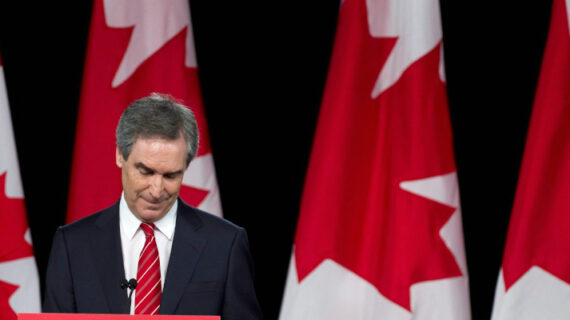When it comes to health-care policy, the federal Liberals just stole a march on the provinces and on conservatives by committing to provide national low- and middle-income dental care coverage and national pharmacare. But it’s not too late to catch up or even get out ahead of them.
First things first. It is absurd that our health-care system does not cover most prescription drugs, vision, dental care, and out-patient care. In 2022, these treatments (especially prescription drugs) are part of essential medical care, but they remain arbitrarily excluded based on what was considered important half a century ago. That was always going to have to change as political reality caught up with the technology. What is most surprising about last week’s announcement is that it took so long.
Canada’s lack of prescription drug coverage and public dental care is symptomatic of a bigger problem with our health-care system. When it comes to health-care policy, most Canadian politicians and commentators can’t see beyond the United States (perhaps they could use the vision coverage that our system also fails to provide). They satisfy themselves with the knowledge that, at least when it comes to affordability and some forms of access, we do better than the Americans, but they never bother to lift their eyes to see what is happening in Europe or Australia and New Zealand. If they did, they would see what has been obvious for more than a decade: Canada is badly out of step with most of our peer countries.1“The U.S. ranks #11 — last. Exhibit 2 shows the extent to which the U.S. is an outlier: its performance falls well below the average of the other countries and far below the two countries ranked directly above it, Switzerland and Canada.” https://www.commonwealthfund.org/publications/fund-reports/2021/aug/mirror-mirror-2021-reflecting-poorly#equity
Ironically, this means the same smug incuriosity that has kept us the only developed country with a government monopoly over most health care has also kept us complacent about our lack of coverage for things that are commonly covered in other countries. This could only go on for so long. At some point, our public health-care system was going to expand to include decades of medical advancements. It was just a question of when, how, and who would do it. After last week’s agreement, it looks like we have a tentative answer to the first part of that question—sometime around 2025—but the “how” and maybe even the “who” are still up for grabs.
I have believed for some time that Canadian conservatives should accept the inevitability of health care expansion and that, following Ralph Klein’s adage that politicians should see which way the parade is heading and jump out in front of it, they should beat the NDP and the Liberals to it. This would have two advantages: first, it would be consistent with the kind of working-class and middle-class populism that is conservatives’ best bet to win modern elections; and second, it would mean the policy could be done right.
If we were designing the Canadian health-care system from scratch, no one would come up with the frayed patchwork we have today, where hip replacements can take two years or more and our equity in access—the one thing you’d think a state monopoly would be good at—ranks second last among developed countries.2“Compared to the other countries, the United States and Canada had larger income-related inequities in patient reported experiences.” https://www.commonwealthfund.org/publications/fund-reports/2021/aug/mirror-mirror-2021-reflecting-poorly#equity Instead, we would probably look at how public health care is paid for and delivered in places like Norway or Switzerland or Australia and learn from them. It may be too late for most of our health-care system, but it is not too late to get pharmacare, dental care, and long-term care coverage right. Or at least it wasn’t too late until last week. Now, with the NDP dictating federal policy and federal conservatives shut out of the process, the last hope will be for provincial conservatives to act—either alone or together.
Quebec, which among Canadian provinces has the closest thing to a full-blown pharmacare program, provides one model for what a province can do on its own. A mostly positive 2019 evaluation of the Quebec system by the CD Howe Institute estimated that expanding Quebec’s system to the rest of the provinces would cost $2.2B (in 2020 dollars).3“One advantage of the public drug insurance model in Quebec – currently the only province with universal prescription drug insurance – is that it includes a funding mechanism: enrollees pay an annual premium. Adopting a prescription drug insurance model that includes a funding mechanism would reduce the potential for short-term strain on government budgets.” https://www.cdhowe.org/sites/default/files/attachments/research_papers/mixed/Commentary_544.pdf This means that it would cost about $45m for a province like New Brunswick or about $320m for a province like Alberta. Adding dental care and any other expanded coverage would raise the cost further, but it is not a prohibitively crazy price tag, especially if the federal government is now bringing funding to the table (or if provinces taxed employer-provided health care benefits to defray the cost for those without existing coverage).
Not every province would have to follow the Quebec model, of course. In a federal system, each government should be able to choose how it wants to design its programs to direct relief to those who need it most. This could include, for example, applying different forms of means testing, refundable tax credits, deductibles, or co-pays. A 2016 Macdonald-Laurier Institute paper suggested some promising options. One obvious choice would be to build on the established existing private insurance market and emulate insurance-based health-care systems used successfully in Switzerland and the Netherlands. This would make the design easier and faster to implement.
Using an insurance-based approach would also allow provinces to introduce a model of health care that improves on the current government monopoly system, but is not especially threatening because: (a) it would be a new benefit and (b) it would align with how most people who already have coverage for these services get it. New programs could extend the kind of benefits most public and private employees receive to those who don’t already have it and can’t afford it. An ambitious and far-sighted province could also lay the groundwork for expanding private insurance to cover regular health-care treatments where waitlists currently make public options an empty promise.4“Specialist physicians surveyed report a median waiting time of 25.6 weeks between referral from a general practitioner and receipt of treatment—longer than the wait of 22.6 weeks reported in 2020. This year’s wait time is the longest wait time recorded in this survey’s history and is 175% longer than in 1993, when it was just 9.3 weeks.” https://www.fraserinstitute.org/studies/waiting-your-turn-wait-times-for-health-care-in-canada-2021
Although the idea of a significant new entitlement program will set off alarm bells among many fiscal conservatives and libertarians, I would ask them to put their skepticism on hold and consider three things. First, it is not radical to think that, if we are going to have public health care (and we are), it should include the things that are necessary to care for our health in 2022. Second, relief for unavoidable life costs would be very popular among families experiencing an acute cost of living crunch and is consistent with a common good conservatism. Third, and most importantly, it is happening whether you like it or not. If you want input in how it happens, now is the time.
If provinces can beat the federal government’s announced timelines to implement their own policies (which shouldn’t be hard, given the pace at which the wheels of the federal bureaucracy turn), they will have a better chance to earn some credit for the benefits provided and to insist, as Quebec will almost certainly do, on being able to apply new federal funding to the systems they have already set up on their own terms. Federally, conservatives could then support expanding health care coverage in principle while remaining faithful to the Harper government’s commitment to constitutional federalism and defending the right of the provinces to design their own systems without meddling from federal politicians.
I began by saying that what surprised me most about last week’s agreement between the Liberals and the NDP is that it took so long. For three years, Trudeau has been governing with the open support of the NDP, which means the new confidence and supply agreement is really just a formalization of the status quo. You can think of it like a couple that has been living in sin for years finally deciding to tie the knot. Sticking with that analogy, if conservatives want to have a say in the future of Canadian health-care policy, they should speak now or forever hold their peace.




